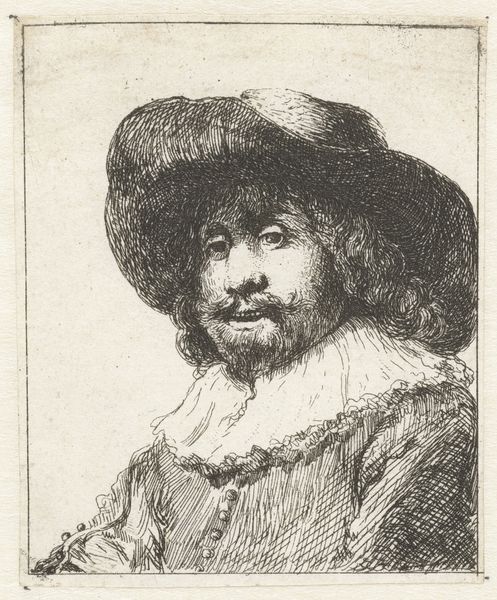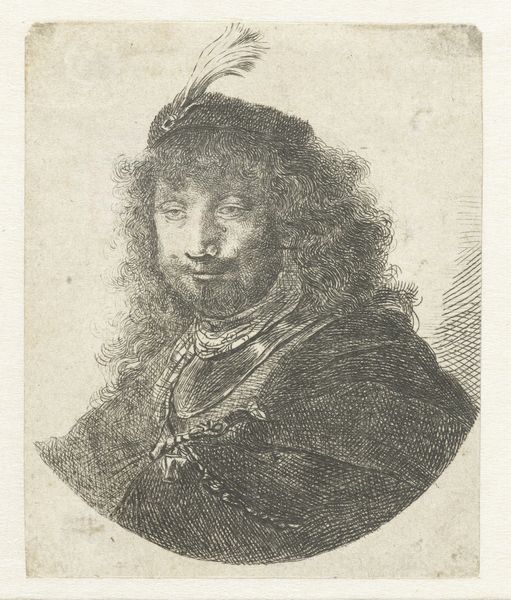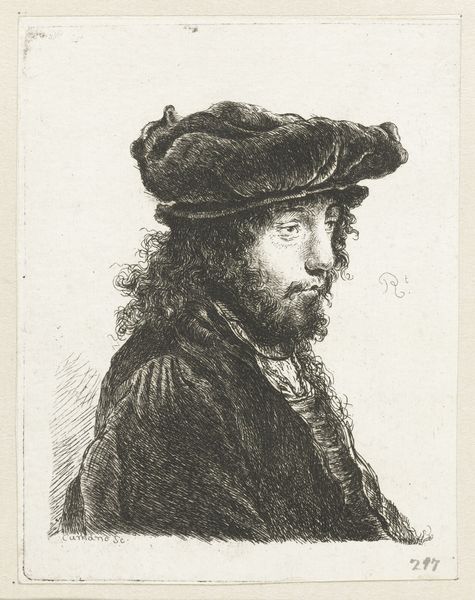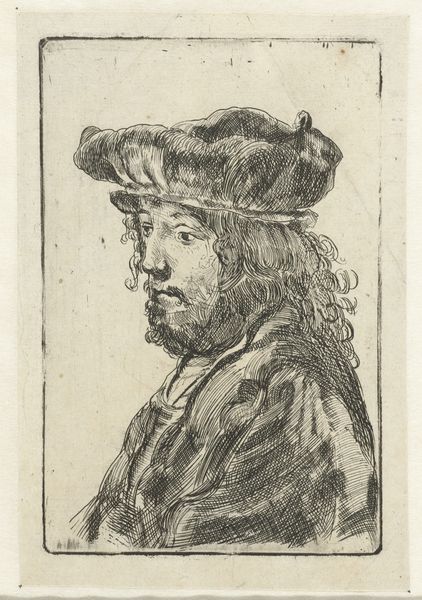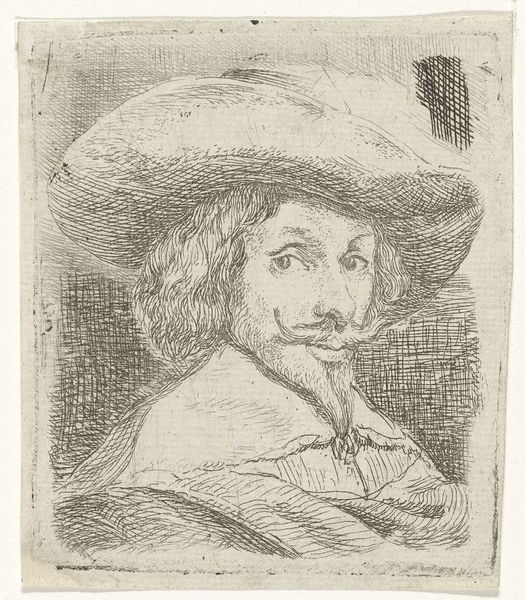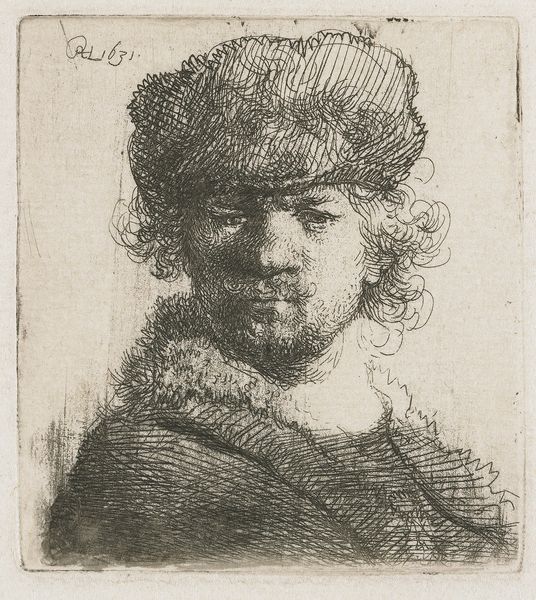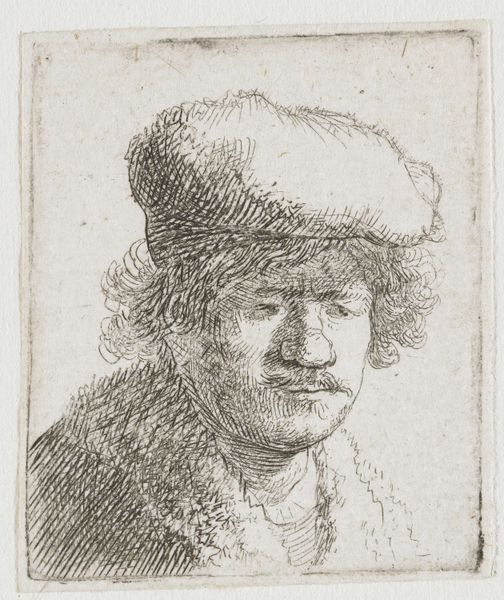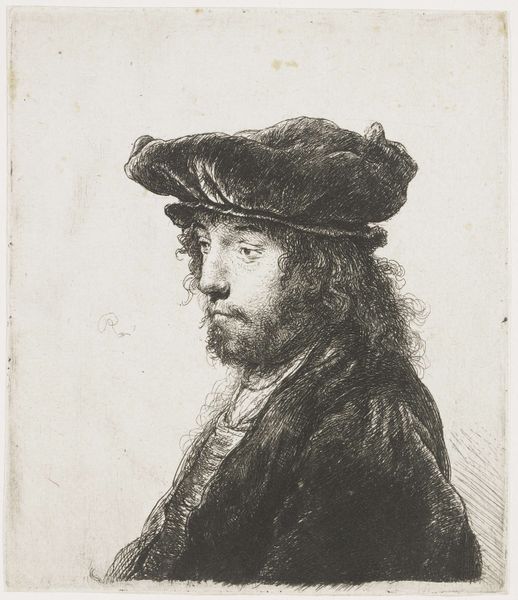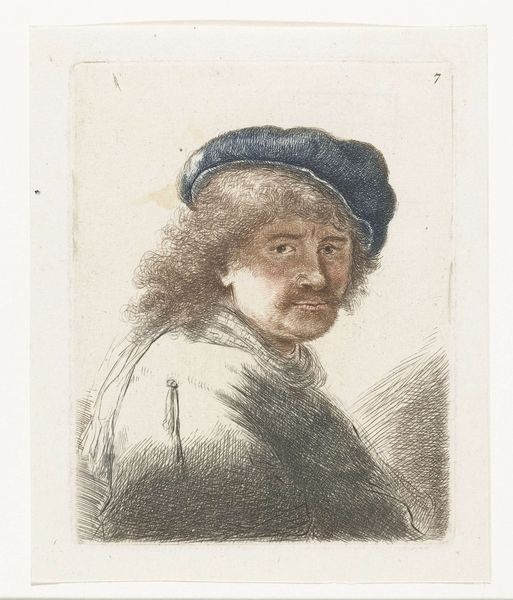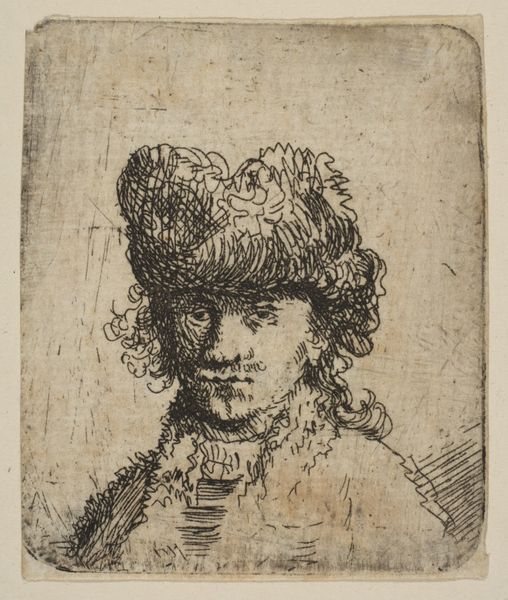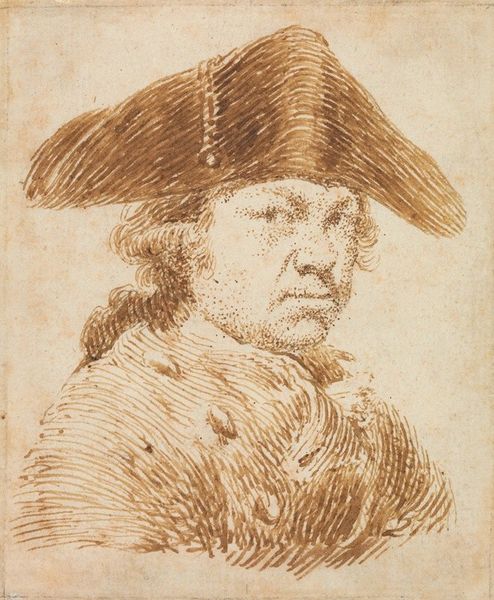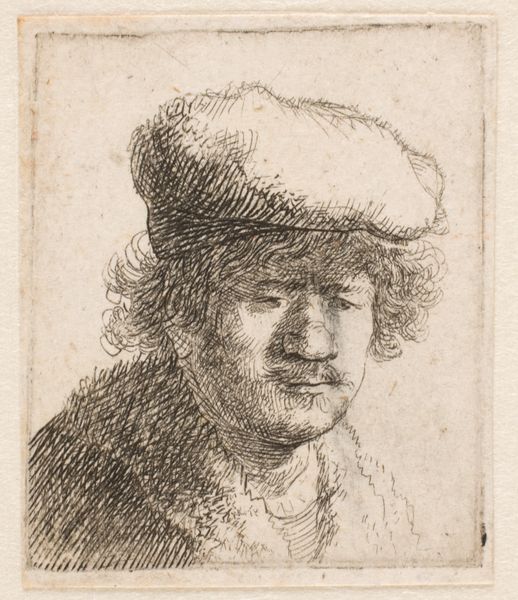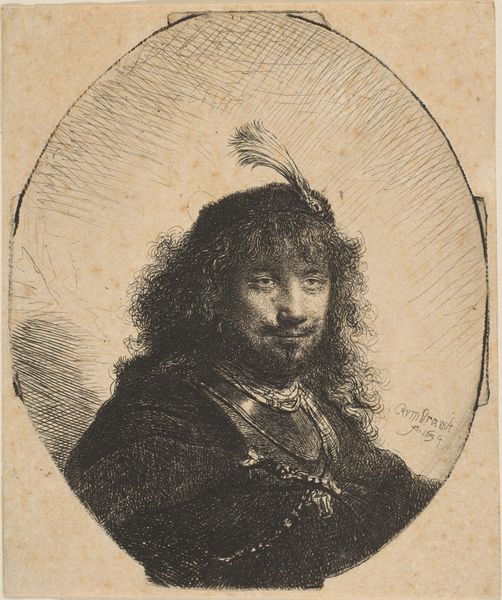
print, etching
#
portrait
#
self-portrait
#
baroque
#
dutch-golden-age
# print
#
etching
#
figuration
#
line
#
portrait drawing
Copyright: National Gallery of Art: CC0 1.0
Curator: This etching, "Man in a Broad-Brimmed Hat," was created by Rembrandt van Rijn around 1638. It is a wonderful example of his mastery with the etching needle. Editor: The first thing that strikes me is how intimate the portrait feels, even though it is rendered with such fine lines. The contrast gives the figure a robust, almost tangible presence. Curator: Absolutely, and this particular piece really highlights Rembrandt's engagement with self-representation. We can explore how such self-portraits become performative, challenging notions of identity through costume and pose. This etching operates within the Dutch Golden Age’s social fabric. Editor: And I think that is very clear. Etchings like this one offered a wider distribution than paintings alone. It is interesting to consider how these readily available portraits shaped the public’s understanding of artists and their role in society at the time. Curator: Exactly! The scale contributes to that accessible intimacy. The almost crude strokes serve a greater cause. Note also the gaze of the sitter—there is confidence but perhaps also vulnerability? I wonder what dialogues with the viewer Rembrandt intends? Is he inviting them into his world, or is he guarding a truth about himself? Editor: Yes, you have a point about the slightly unfocused expression. There's something almost theatrical about the wide-brimmed hat, drawing your eye right into his face, his carefully cultivated image, for public display. Curator: Right. It’s impossible to ignore that costume here. He's performing an artistic identity but also perhaps reflecting contemporary ideas about status. By presenting this piece to the market, it became more than an introspective examination, it transformed into a socio-political assertion. Editor: It’s an etching that resonates across history, even now inviting dialogues that reflect our evolving understanding of art, identity, and its place in society. Curator: Indeed, looking at this etching reminds us that the study of historical images enables critical reflections on identity today.
Comments
No comments
Be the first to comment and join the conversation on the ultimate creative platform.
